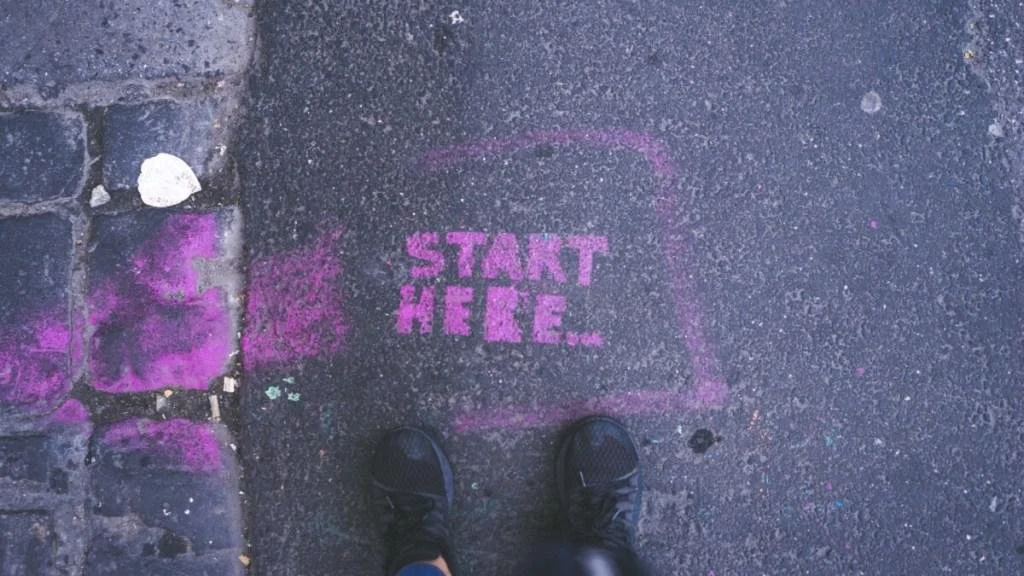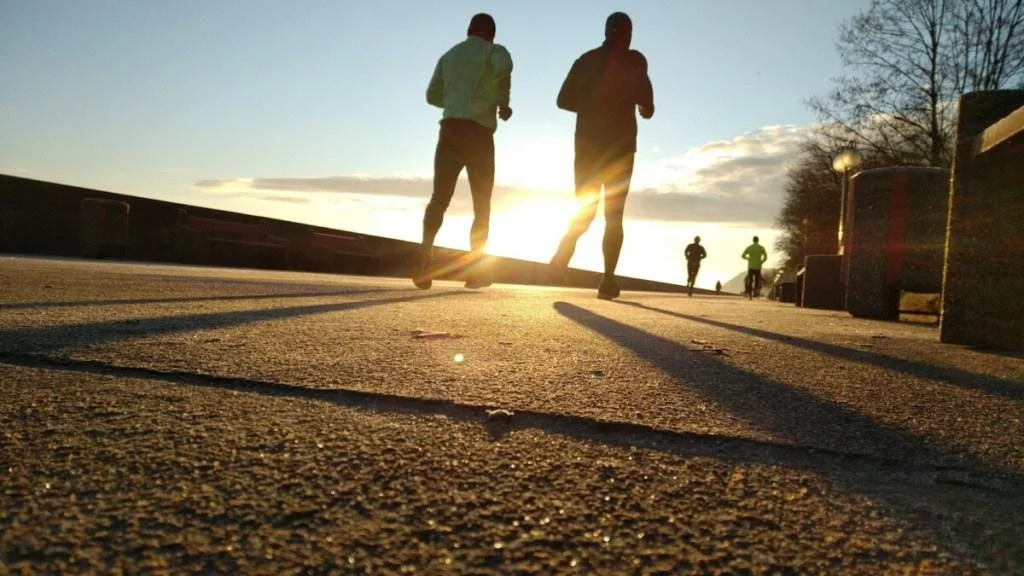9 Steps to Train For Your First Race
If you’ve never ran longer than a few blocks or a mile, it can be very intimidating to think of running your first race. As long as you put in the time and effort to prepare, you can go from your couch to the finish line with ease. Whether your goal is to run a 5K or a full marathon these tips will help you prepare for the race. Learn how to train for your first race below!
1. Get the Right Gear
One of the most important purchases you can make as a runner are your running shoes. There are so many different brands and styles of shoes to choose from. So it can be very overwhelming to research and find the best shoe for you.
I highly recommend starting at a running shoe or sporting goods store. Talk to one of the sales associates to help you pick out a shoe that’s best for you. You’ll want them to take a look at your gait (or foot strike) to see if you have any pronation issues. If you notice you have high or low arches, you’ll also want to let them know. That way they can recommend the best shoes to fit your needs. While the sales person can help narrow down your choices, the ultimate test will be how the shoe fits your foot and how comfortable you feel.
Keep in mind that you may need to go up a shoe size with running shoes. You want to make sure you have the best fit and that your shoes aren’t too snug in case your feet swell a bit while running. Don’t feel embarrassed to put both shoes on and take a few running paces to make sure the shoes feel right. Good running shoes can get pretty pricey and you definitely don’t want to rush your choice at the store. You’re going to be spending A LOT of time in these shoes over the weeks/months leading up to your race. So it’s very important to find the right pair for your feet.
2. Sign Up For a Race You’ll Love
One of the best ways to get motivated to train for your race, is to pick one you’ll love. The majority of races out there use a portion of their proceeds to support a charity. If there’s a cause that you’re passionate about you can certainly find a race to support that cause.
You can start by searching for races in your community and look for one that supports a local cause. If you’re the adventurous type or love to travel, start by picking a place you’ve never been to and search for races near that area. Whether you love the beach, mountains or want to run through a big city like LA, San Francisco or New York City there are plenty of races out there to choose from. It’s important to pick a race that you’ll be excited to run. This will give you extra motivation to stick to your training plan.
3. Make a Plan
Once you pick your race, it’s important to plan out your entire training schedule from Day 1 to Race Day. If you plan to run a marathon, you'll want to give yourself about 4-6 months to train. If you plan to run a half marathon or shorter distance, I recommend giving yourself about 2-4 months to train.
Giving yourself enough time to train ensures that you will have enough time to build up to the race length without pushing yourself to injury during training. Even though you may be excited to run your race and want to sign up for the soonest one possible, it’s best to make sure you give yourself enough time to train. There’s nothing worse than getting pumped up for your first race and not being able to run because you injured yourself during your training.
4. Start Small
As you form your training plan, you’ll want to start with shorter runs and slowly build up your mileage. If you’ve never ran before or it’s been a while since you’ve ran start by seeing how far you can without stopping. Then you can build up from there. If you’re just starting to run, you may want to consider running intervals first.
For example, if you’re only able to run 3 minutes at a time you can start off by running 3 minutes and walking for 1-2 minutes and repeating this cycle for about 20-30 minutes. Every week you’ll want to extend the time you’re running and shorten the time you’re walking. Eventually, you'll be able to run without stopping. From there you can start building up the length of time or amount of miles you’re running at a time.
5. Don’t Neglect Strength Training and Stretching
When I trained for my first marathon, I made the rookie mistake of neglecting strength training and stretching. I focused on building up my mileage, and didn't make time for strength training. After my long runs, I'd go straight to the shower without stretching. Even though I was able to finish the race, it would’ve been a lot less brutal of a finish if I made the effort to strength train and stretch during my training.
I recommend doing full body strength training twice a week. If that seems too daunting, you can also break up your exercises so that you do your upper body exercises twice a week and lower body exercises twice a week.
Another option is to build a workout based on compound exercises. These exercises work both your lower and upper body in the same movement (like a squat to overhead press). Whatever you decide to do make sure you follow through and do it! You’ll want to make sure you have a strong body and core. This will improve your running form, prevent injury and give you the strength to reach the finish line.
6. Start Today
DO NOT fall into the trap of putting off the Day 1 of your training plan until the following day for whatever reason. It’s easy to think “I still have 16 weeks until the race, if I skip today I’ll still have plenty of time to train.” If you let yourself push off the first day of training, it makes it so much easier to continue pushing off your training. Soon you’ll be 2 weeks before race day and you’re scrolling through the race website to see if you can get a refund if you cancel. A lot of races don't allow refunds. So you’re better off putting on your shoes and going for your first run as scheduled.
7. Learn to Love Exercise
If you think of exercise as torture or punishment for overeating, it’s going to be very hard to stick to your training plan. As you progress through you’re training plan, you’re going to spend more and more time exercising. It’s time to learn to love it. If you have a busy schedule or are stressed from work, look at running as the chance to make time for yourself and destress. After your first few runs, you’ll start to feel the effects of the endorphins and notice a shift in your attitude.
If you’re consistent with your training and stick to the plan, after a few weeks you’ll start to look forward to your runs and workouts. The first few weeks are the toughest, but once you break past that threshold you’ll notice it gets easier and easier to stick with the plan and running will become one of your favorite parts of your day.
8. Get an Accountability Partner
Your accountability partner doesn’t necessarily have to be someone who runs the race with you side by side. Find someone who would be willing to go to the race with you and cheer for you at the finish line. Race day—especially if it’s your first event—can be very intimidating if you go by yourself. It helps to have someone there to calm your nerves as you navigate your way to the starting line. It’s an amazing feeling to see your friends as you reach the finish line and collect your medal!
9. Update Your Diet
Your nutrition plan is just as important as your training plan. Training for a race is the perfect time to tune up your diet and cut down on junk food. You’ll need to change your attitude about food and start to think about it as fuel for your body. As much as I love chips and ice-cream, they’re not the best way to fuel your body while training.
Now is the time to start meal prepping and counting calories to make sure you’re eating enough to power through your runs, but not overeating and gaining weight. Make sure your meals are balanced between vegetables, protein and healthy carb sources.








